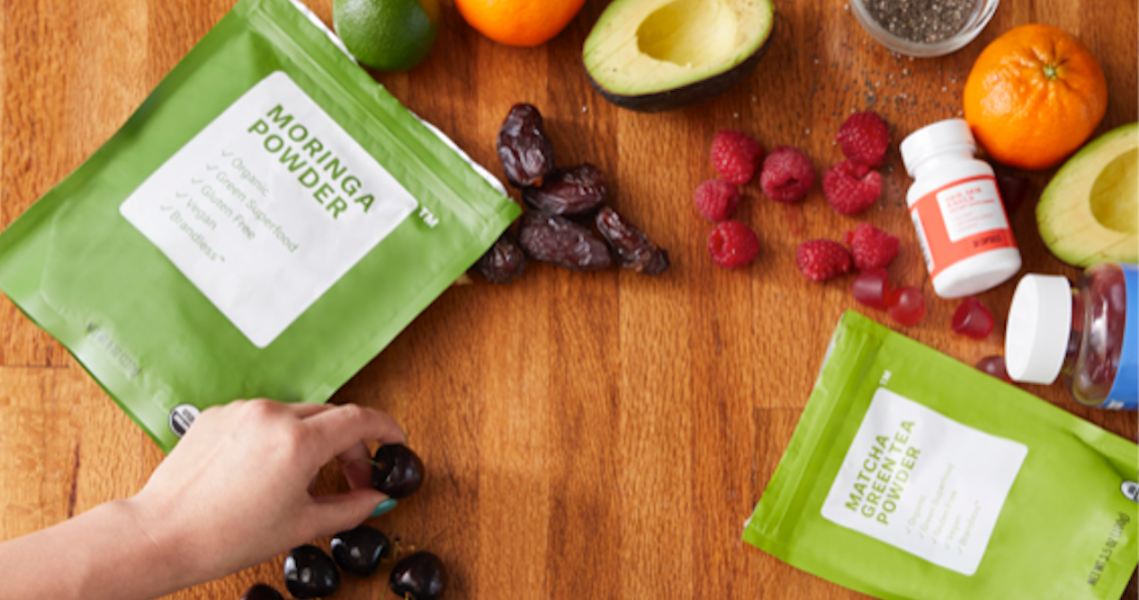Brandless, the direct-to-consumer retailer that sells food, beauty and personal care products, wants to change the perception of wellness as only for the 1 percent.
On March 20, Brandless launched an expanded wellness collection of 15 premium products, featuring superfood powders, vitamins, supplements, essential oils and a seven-day herbal cleanse. This increased Brandless’s wellness assortment to 21 items. All products are between $4 and $15.
The pricing was a conscious attempt to democratize wellness as luxury-only need, said Rachael Vegas, Brandless chief merchant. Brandless, which launched in 2017 and has received more than $290 million in funding (at a $500 million valuation) declined to share any sales figures.
“The premise of Brandless really started from this [belief that] the system is broken,” said Vegas. “[Customers] think better costs more … and the retailer philosophy is that people are willing to pay more because there is a subset [of customers who are]. We believe that better doesn’t have to cost more, and our objective is to democratize access.”
But wellness is also a potentially lucrative category for Brandless, especially as the adoption becomes more mainstream. From 2015 to 2017 alone, wellness grew from a $3.7 trillion segment to a $4.2 trillion market, and mass retailers and grocers are increasingly expanding their wellness assortments. Target began making more moves within wellness in January 2019, and Thrive Market launched its own private-label line of vitamins and supplements in 2016. Even Costco sells essential-oil rollerballs. Brandless customers mostly reside on the East and West Coasts, Vegas said, but added that middle America is where the company is seeing the most growth overall. It’s an especially promising space for wellness, as existing wellness offerings are less accessible and affordable.
“Brandless’s deeper foray into the wellness space indicates how wellness is expanding beyond a luxury lifestyle to a mass-market trend,” said Anagha Hanumante, an analyst at CB Insights. “Though high-end wellness may not be slowing down, more options are emerging to meet the needs of consumers who can’t afford luxury-priced products.”
Vegas said she expects the new products to outsell the current assortment and that the superfood powders, specifically, will become hero products. Brandless’s subscription program, which debuted in January 2019, is also likely to get a boost, said Vegas, since products like powders and vitamin supplements are habitual items with frequent replenishment and reoccurring revenue opportunities. Brandless subscribers can choose to have any of of Brandless’s 500 products be delivered on a recurring schedule of between two and eight weeks. Vegas declined to state how many subscribers Brandless currently has.
Ad position: web_incontent_pos1
According to data gathered by Edison Trends and published in September 2018, Brandless sees lower retention rates and lower order averages than established players such as Walmart, Target and Amazon, and e-commerce competitors like Instacart and Thrive Market. Vegas declined to provide current retention rates and order averages, but said the company’s figures are “very different” now, compared to 2017 when the brand launched.
“For Brandless, ensuring that this new line will entice consumers, who may have loyalty to existing brands offering similar products, will be crucial — especially as brand loyalty is becoming more important with the increasing saturation within the wellness economy,” said Hanumante.
Photo courtesy of Jen Siska. Not affiliated with Brandless.




